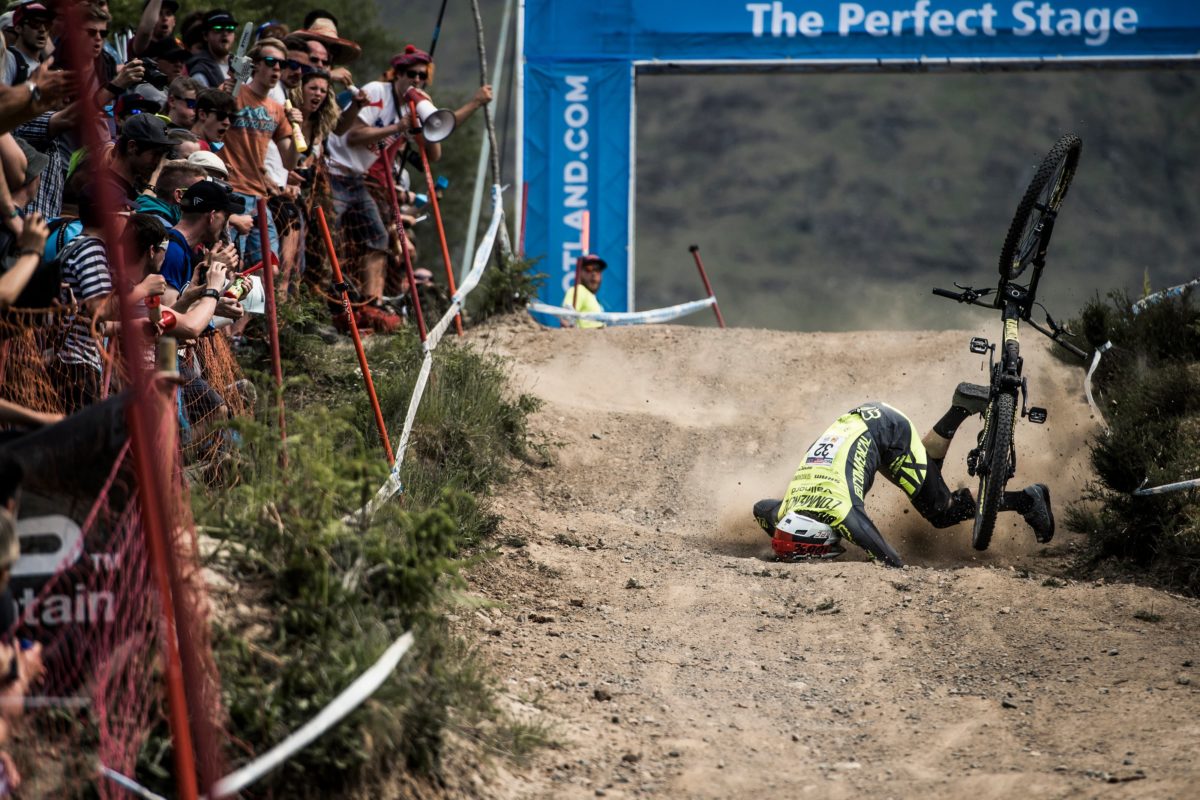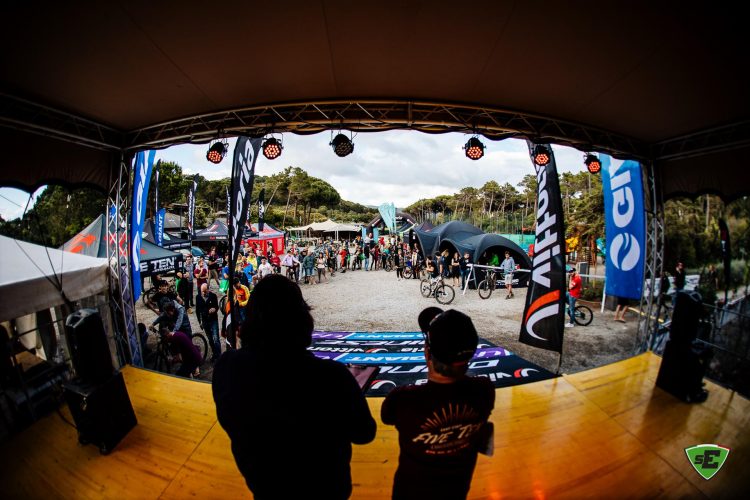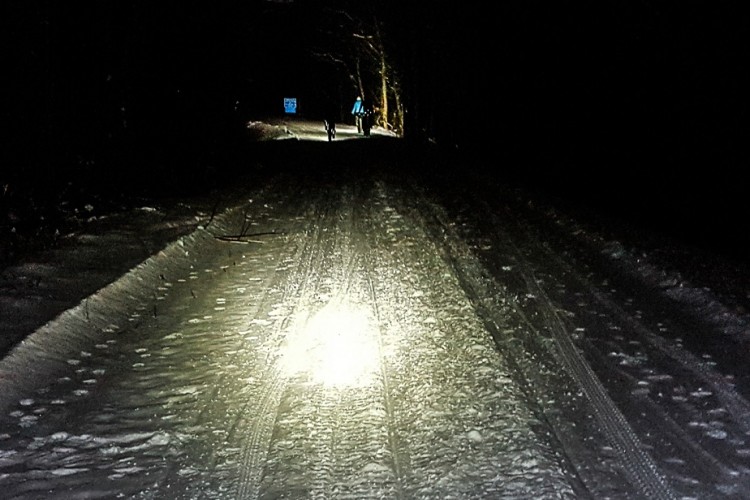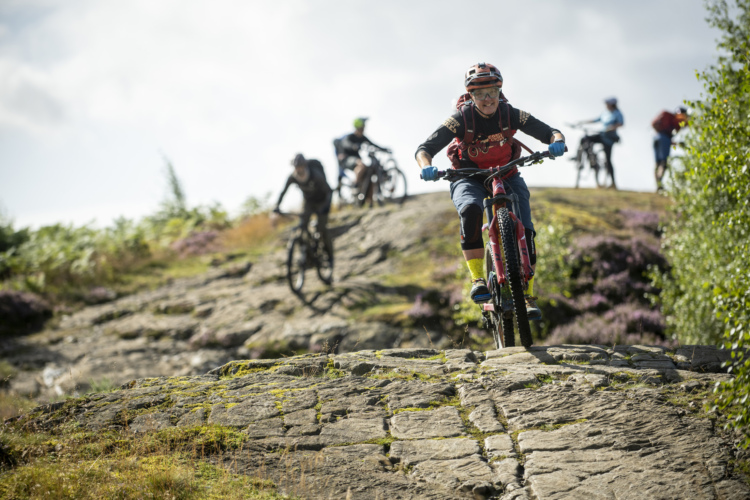
There, I said it. I know this might not make me popular among the enduro crowd, but I thought I should at least say something. I’m sure plenty of mountain bikers will disagree with me, and that’s ok. But before you head for the comment box, at least skim through the headings below to see why I think that racing enduro is more dangerous than downhill mountain bike racing.
If there were statistics being collected on deaths and injuries due to different types of mountain biking, obviously this wouldn’t be a debate at all. Unfortunately, it seems those statistics aren’t being collected, and if they are, the numbers aren’t readily available. Heck, the only real statistics being kept on cycling-related deaths in the USA involve automobile collisions on the road (818 in 2015, 23% involving drunk cyclists).
I’ll start by talking about what makes enduro and DH racing similar.
Similarities Between Enduro and DH Racing
Enduro and DH racing both involve timing riders as they descend a course as fast as possible. While the overall race formats may differ — enduro races can involve multiple timed stages, and riders have to ascend on their own power — the risk of a high-speed crash due to a rider miscalculation is fairly similar.
I suppose some might argue that riders approach higher speeds in DH races, or that DH races include more dangerous features. However, each race course is different, and for every fast/difficult DH course that has ever been designed, there is probably an equally, if not more, fast/difficult enduro stage out there. In fact, enduro races sometimes utilize parts of DH race courses.
Enduro Venues Are Often Remote
One of the things that makes enduro racing so attractive is that races often take place in picturesque, remote locations over natural terrain. In this way, enduro is much closer to real mountain biking than DH, whose courses often involve machine-cut tracks. The problem is, if a rider has an accident on a descent (or even a climb), emergency services are generally located far away and access to vehicles is often limited. Not only that, cell phones may not work in remote areas.

In contrast, most downhill mountain bike races are held at ski resorts with uplift capabilities that make it easier for competitors to get to the top of the mountain. The upshot is ski resorts are usually set up with emergency vehicle access points, and are generally located close to emergency services in town or on the mountain itself. Plus, every cell phone provider in America works hard to offer coverage at popular ski areas to serve their well-heeled customers.
[see_also id=’65963′]
Because enduro courses are so long and spread out, there are far fewer spectators along the route who might witness a crash. In emergency situations, every second counts. The sooner someone — anyone — can get to the victim or call for help, the better the potential outcome.
Finally, DH race courses can and do feature additional safety protections like padding around trees and mesh fencing to keep riders from sailing off steep cliffs. Because enduro stages are so remote and/or spread out over long distances, it’s usually impractical to install similar safety equipment on the course.
Limited Enduro Course Pre-Rides
In a lot of ways, enduro racing seeks to get back to the basics when it comes to mountain bike racing: going all-out, under one’s own power, reacting to whatever the trail throws at the rider. With this in mind, most enduro races offer limited pre-riding of the course, only revealing the route days before the race, if at all. The idea is to give riders an equal playing field, since the course is new to everyone. Again, this is one of the things that makes enduro racing so attractive.

It also makes enduro racing more dangerous than DH racing.
DH racers, on the other hand, generally have plenty of opportunities to scout out a race course, to take practice runs, and to qualify before the real competition begins. Unlike enduro racers who might take a risk and fly blind into a corner, DH racers know exactly where they need to brake, and where they can safely pick up speed.
[see_also id=’46440′]
Enduro Riders Need Comfortable Gear
Hopefully if you’ve read this far, you get the sense that I’m not anti-enduro. Enduro racing can be a lot of fun, and it really strikes at the heart of what it means to be a mountain biker.

Because enduro racers are expected to ride uphill (un-timed), as well as down, they rightfully seek out safety equipment that isn’t too bulky or uncomfortable. Manufacturers have recognized this as well, and offer products inspired by enduro racing, like helmets with extended rear coverage and/or removable chin bars.
Unfortunately, many of these products don’t go far enough, especially for the rider who intends to tackle enduro descents like a DH racer. In DH racing, full face helmets and extensive body armor are the norm because they offer additional safety protection. Again, I can’t blame enduro riders for ditching the full-face helmet or skipping neck and chest protection — all of these items are heavy and just too constricting on the climbs.
Enduro bikes also make subtle compromises to allow them to climb more efficiently than DH bikes, though honestly, this isn’t as much of a cause for concern. Can a DH bike sustain a bigger hit than an enduro bike? Maybe, but it depends on the bike and the rider.
Open Enduro Courses

Because enduro racecourses are often spread across long distances, and many events are conducted in remote areas, the courses themselves remain open to the public. This can be due to logistics (closing the course would take miles of tape!) or due to an agreement with the land manager. Openness is yet another thing that’s great about enduro racing.
As a result, enduro racers can and do unexpectedly encounter other trail users, whereas DH racers are generally assured their courses are controlled to keep spectators and other trail users out of harm’s way. Closed DH courses exist for the safety of both riders and spectators.
The Enduro Mountain Bike Association (EMBA) recently added new safety requirements, including a rule that race stages (i.e. timed descents) “must be closed to public during ALL Official Training times.” Note, this only applies to EMBA-sanctioned events, which represent just a fraction of all enduro races.
More Amateurs Are Racing Enduro
Unlike DH racing, enduro racing isn’t (yet) sanctioned or recognized by the UCI, which exists in part to enforce fair and safe racing conditions for athletes. While the Enduro Mountain Bike Association, formed in 2013, performs a similar function for enduro racing, the group is not nearly as established as the UCI. Consequently, the UCI currently attracts a more professional field of competitors since sponsors can be assured of the integrity of the worldwide results.
In fact, some of the highest paid mountain bike athletes in the world are DH racers, including the man currently at the top of the UCI rankings, Aaaron Gwin, who reportedly earns $1M each year. Because there is more money in DH racing than enduro, the most skilled and capable mountain bike descenders are naturally choosing DH over enduro,
The grassroots nature of enduro racing is an important part of the culture, and as a result even events at the highest level like the Enduro World Series reserve slots for amateurs through a public lottery system. In contrast, UCI downhill events are almost exclusively open only to qualified competitors. Enduro races also tend to offer less separation between amateur and professional riders. This is awesome from a grassroots perspective, but it can be dangerous when two classes of athletes are on the course at the same time.
Finally, DH racing has an established reputation for being accessible to just a select group of riders who have access to the proper equipment and terrain to train for the sport. Enduro racing, on the other hand, is seen as a sport that requires less specialized equipment and one that can take place virtually anywhere with sloping terrain. Heck, there is a popular enduro series that takes place here in metro Atlanta on a course with less than 100 feet of total elevation change that attracts countless first-time enduro racers.
So what?
Great question! As I stated many times, I think enduro racing is great, and I don’t mean to suggest we get rid of it or even change it necessarily. However, I do want to raise awareness of the elevated risks involved and to give mountain bikers a chance to reflect on how we might make enduro racing safer in the future.
What do you think: can we make enduro racing safer without taking away the things that make it great?










1 Comments
Dec 19, 2017